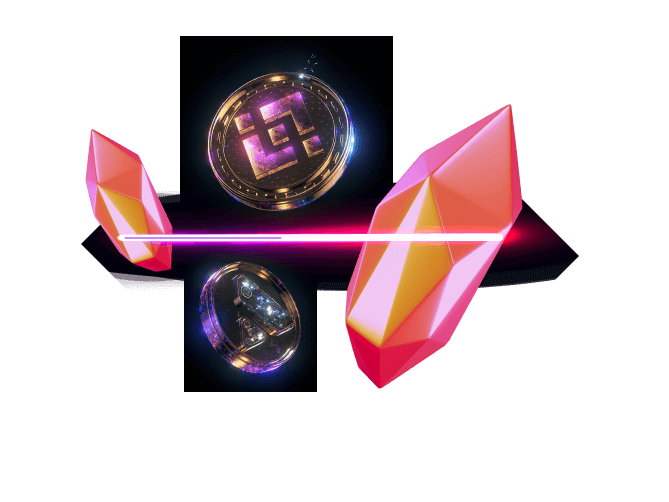Gameplay
Armaldia’s crypto coin
Armaldia has a crypto coin that is the primary resource in the game and is used as the default resource for exchanging value in-game. Armaldia’s crypto coins can be exchanged for real money.
Armaldia crypto coin purpose gives players the opportunity to:
- Buy building floors (from the game)
- Trade game objects (buildings, floors, land)
- Speed up processes
- Buy resources
- Buy NFTs (buildings and land)


Resources
You gain 4 of 6 types of resources from your land plots. The better land plots give you more resources.




The resources are used to buy armed forces to participate in the cyclical faction war. Armed forces are distinct sets of units with varying power levels and resource requirements. More robust units require different types of resources and larger quantities to be purchased.
Guild and Social Mechanics
The game will include the basic social features typically expected in multiplayer games, such as a chat functionality with its related features, allowing you to communicate with your colleagues and friends directly and/or in a group. One type of player group is explicitly supported and encouraged by the game in the form of player guilds. Guilds, for a fee, provide players with an exclusive communication channel and the ability to display their guild to other players. Additionally, guild members can be configured as guild patrons, redirecting their in-game monetary rewards to the guild leaders.
Key points:
- The game has basic chat features
- Guilds, or player groups, allow players to form exclusive groups
- Guilds allow redirecting player rewards from the same guild members to other members
- Guilds have associated costs (fee to register, maintain and upgrade the guilds)


Marketplace
NFT and other in-game usable items trading are to be facilitated by a marketplace system. The system described is to function the same way it does in MMO games, WoW (World of Warcraft) specifically. A marketplace allows in-game players to sell their resources, items, and NFTs.
To enable players to purchase war forces, which cost various resources, the players have access to the marketplace of Armaldia. The marketplace provides the functionality of listing resources to be traded for specific other resources, allowing the players to trade unwanted excess materials for more desirable ones. The two possible listings allowed are direct trades and auctions, where the former lets players buy parts of the listing and bid on the whole listing in the latter case. Additionally, listing resources on the marketplace requires a non-refundable deposit. Every in-game resource is tradeable.
Key points:
- The game has a marketplace, allowing players to trade resources
- Trades can be direct, using arbitrary amounts, or auctions, trading complete amounts
- Listing materials costs a non-refundable deposit
- Every in-game resource is tradable
- NFTs buildings and lands are tradable


The marketplace is a simple and effective system for stabilizing the economy and allowing the players to determine the value of every item. Bidding permits players to spend less money at the cost of potentially not receiving the item or at the very least receiving it not instantly. The AH supports regular item selling by setting the bid and buyout prices to the same value.
NFT Attraction
Customizable Land – Dioramas
- The only NFTs in the game are plots of land.
- The owned land can be customized with buildings.
- It can be presented isolated from the rest of the game. In the game, the player owns self-sustainable pieces of land, the equivalent of real-life miniature models – dioramas. Images below show examples of the concept, with the primary features being isolation from the rest of the world and clear variation potential.
Benefits
- Owned land can be inspected on its own, which associates the value of the owned NFT with a specific in-game model and allows to easily view and trade the NFTs in and out of the game.
- Easy customization and differentiation between different NFTs.
- NFT value can be quickly estimated visually by inspecting their associated image/model.
- There is plenty of opportunity for continuous game expansion through introducing new objects/materials/buildings etc, to customize the plots of land.


In other words, at the game’s core, before any other systems are added, the main objects the player owns and interacts with are separated pieces of land “floating in space”. This core establishes the fundamental focus on individual ownership and personalization. Adding new systems on top can then only help deepen the player’s relationship with the owned NFTs.
War Mechanic
Participate in a structured war effort between the two conflicting factions. Cooperate with all other players from your faction to ensure victory across three war cycle phases:
Preparation
Construct buildings, obtain and trade resources to prepare for the war phase
War
Strategically spend generated resources for the war effort of your faction.
Recovery
Celebrate the victors of the war and review the results before the next war cycle.


War Zones
Each one of the zones contain war land the players compete on. The winning faction now wins if they have more powerful buildings in more zones than the other faction:
- Players can build and power floors in every zone
- Factions compete in each zone separately
- The winning faction has more power in more zones
In the case of an unlikely overall tie, the total power levels are compared to determine the winning faction, effectively reverting to a higher power number wins the war.
Zone points
Each one of the zones will have some points that the winning faction will gain by winning it. The image below shows a potential point assignment where:
- Winning in the center zone gives 5 points
- Winning in the center-adjacent zones gives 4 points
- Winning on the corner zones gives 3 points
The players strive to gain the most points rather than win the most zones, making it possible to win the war by having won in fewer zones than the opposing faction.
